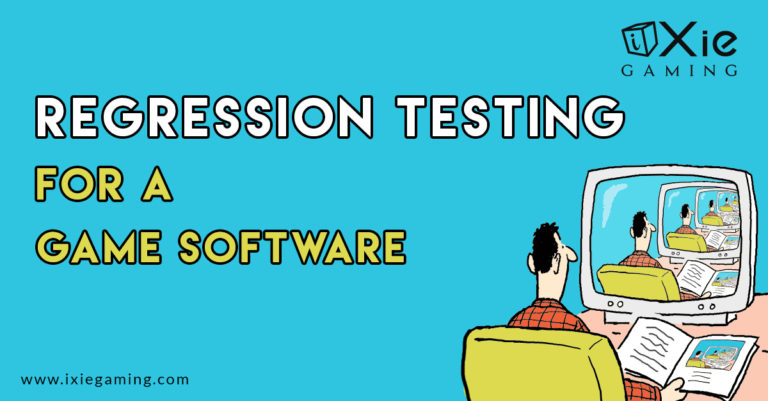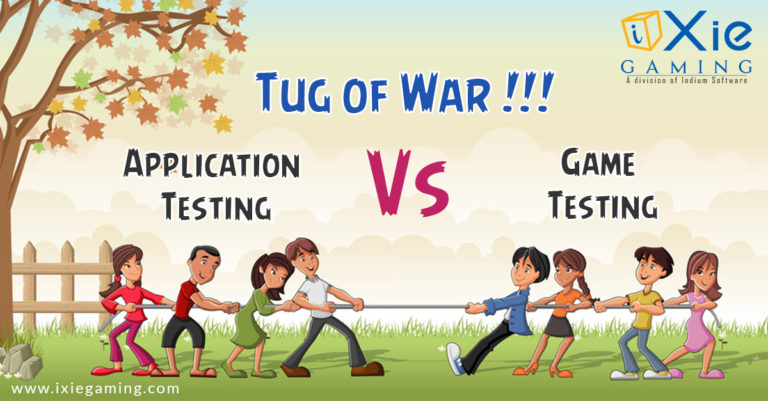Testing an open-world game can be complex and demanding due to the vast and interconnected nature of the game world. However, it is crucial in ensuring the game’s success as it eliminates possible glitches and bugs, delivering a seamless gaming experience. If your internal team can’t handle open-world game testing, seeking professional game QA services is highly recommended.
But what is an open-world game? And what should you consider during open-world game testing? Join us as we comprehensively explore open-world game testing and things to consider during the testing process.
What is an Open-World Game?
As the name suggests, an open-world game is a game with a virtual world in which players can approach goals and objectives freely. In other words, players can move freely through the virtual world, as it doesn’t offer a more structured and linear gameplay. In an open-world game, players aren’t limited to following a specific storyline. Instead, they enjoy considerable freedom in terms of when and how to approach particular objectives.
Now that you understand open-world games, let’s explore the key things to consider when testing these games as part of the QA services.
12 Important Things to Consider When Testing Open-World Games
Here are a few things you must consider during open-world game testing to ensure a seamless gaming experience:
1. Functional Testing
Functional testing is arguably one of the most crucial aspects of QA services. It ensures the game runs as expected and eliminates potentially frustrating game behavior. Here are some key aspects to consider in functional testing:
Core mechanics. Ensure that basic gameplay mechanics work as intended, including movement, interaction with the environment, and combat. This guarantees a seamless gaming experience.
AI behavior. Thoroughly test the behavior of non-player characters (NPCs) and the consistency of their actions in the open world.

2. World Environment Testing
Since open-world games give players more freedom to approach objectives, testing the world environment is crucial. It helps identify objects that may get players stuck in the open world, hindering their gaming experience. Here are a few things to consider when testing the world environment:
Map validation. Verify the accuracy of the in-game map, including geography, terrain, and landmarks.
Boundaries and collision. Identify areas players can exploit to break the game’s design and eliminate objects that may get players stuck.
3. Mission and Quest Testing
In open-world game testing, assessing the main storyline is crucial. Also, test all side quests and dynamic events to ensure they trigger correctly and don’t break the game’s progression. This helps achieve a seamless open-world gaming experience.
4. Bug and Glitch Hunting
The last thing you need is to release an open-world game with frustrating glitches and bugs. This can significantly affect gameplay by delivering a substandard and inconsistent gaming experience. But how do you ensure your open-world game is free of bugs and glitches?
Thoroughly inspect the game for physics bugs, animation problems, and graphical glitches. This will help you detect and fix bugs and glitches that may occur due to the open world’s complexity.
5. Performance Testing
Does your open-world game perform optimally? Game performance is a critical success factor in the gaming world. Here are some aspects of performance testing to consider to ensure your open-world game performs as expected or beyond players’ expectations:
Load times. Assess loading times when transitioning between areas or fast traveling. This will ensure a seamless transition between environments, granting a seamless gaming experience.
Frame rate. Open-world games can be graphically demanding. Therefore, game QA services should check for a consistent and acceptable frame rate.
Stress testing. Push the game to its limits with many AI entities, player actions, and effects. This will help you identify and address performance issues that may arise due to an increased number of players.
6. Open-World Interactions
As initially stated, open worlds can be complex. Therefore, QA services should include testing systems that involve sophisticated interactions, such as seasonal changes, day-night cycles, and dynamic weather.
7. Compatibility Testing
In today’s ever-evolving gaming world, more devices support open-world games. Therefore, it’s critical to test your open-world game across different hardware configurations, consoles, and operating systems if applicable. This ensures players enjoy a smooth gaming experience across multiple devices

8. Leverage Quality Assurance Tools
Continuous monitoring of open-world games is crucial. It helps you identify and fix issues and bugs after releasing the game. But how do you ensure continuous monitoring? Quality assurance (QA) tools.
Use QA tools to track and report bugs in your game. Also, monitor priorities and progress through a bug-tracking system.
9. Gather User Feedback and Experience
Game QA testers identify issues within your game. Collect their feedback and that of players on their overall experience, including how well the open world immerses them and how engaging the game content is. This will help you identify areas of improvement and optimize your game.
10. Game Progression Testing
Imagine a player accessing the later stages of your open-world game prematurely or bypassing significant parts of your game. For instance, a player goes to stage 10 without playing the earlier stages. This can raise significant concerns among players.
To prevent this from happening, thoroughly test your open-world game progression. Also, implement anti-cheating measures and security protocols. This will ensure players cannot reach later game areas prematurely, fostering fair play.
11. Compliance and Regulations
Ensure your game complies with relevant industry standards and legal regulations, especially for content ratings and privacy requirements. This prevents you from potentially costly legal penalties and sanctions against your open-world game.
12. Patching and Updates
Plan for post-launch updates and patches. This will help you identify and address issues that may arise after the open-world game is released.
Final Thoughts
Testing an open-world game can be a time-consuming and resource-intensive process. It’s essential to have a well-organized testing plan and a dedicated team of QA experts, like iXie, who can thoroughly explore the vast and interconnected world to identify and address potential issues. Considering the things discussed can help you achieve an error-free open-world game that delivers a seamless gaming experience.
Frequently Asked Questions:
Open worlds can be complex. Therefore, game QA services should include testing systems that involve sophisticated interactions, such as seasonal changes, day-night cycles, and dynamic weather.
A well-organized testing plan and a dedicated team of QA experts who can thoroughly explore the vast and interconnected world to identify & address potential issues can help create a consistent and immersive gaming experience that captivates players and keeps them engaged in the vast game world.
By employing performance testing strategies such as stress testing, load times and frame rates, open-world games can provide players with a smoother, more immersive, and technically sound gaming experience within vast and complex virtual environments.
Yes, open-world games can greatly leverage player feedback and early access testing. Players actively engaged with the game possess a unique ability to pinpoint gameplay issues. Moreover, they offer valuable insights into the game’s engagement levels, enabling developers to fine-tune and optimize the experience for diverse player preferences.
Planning to deliver engaging and highly immersive games to players worldwide? iXie’s would be the right choice with massive experience in the gaming industry over the past decade.






